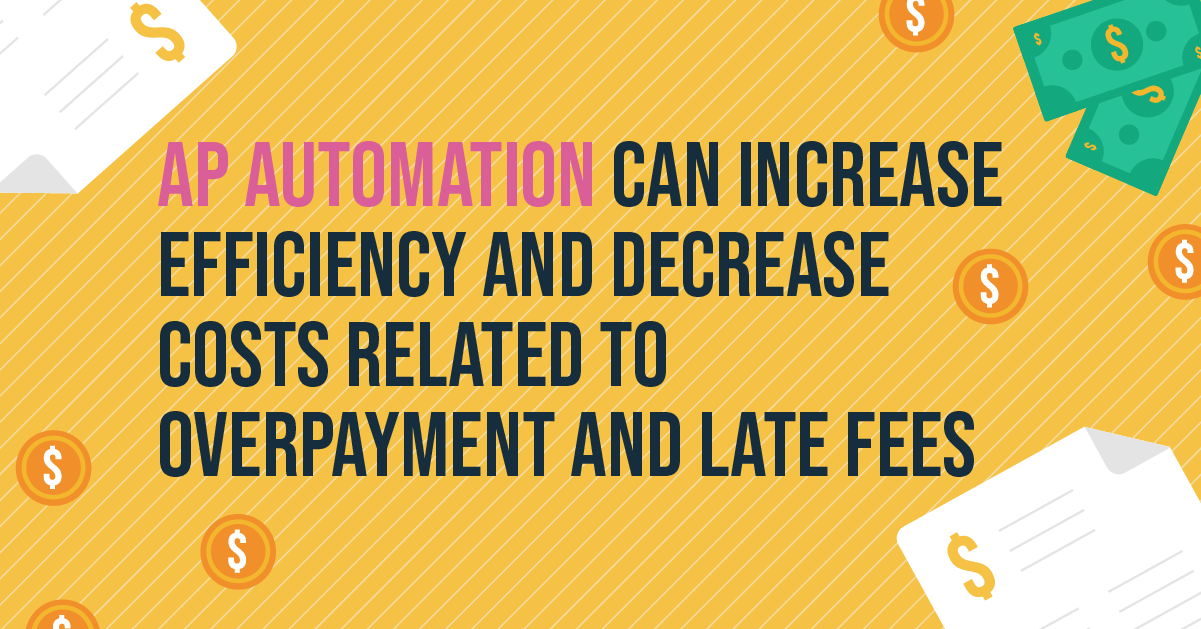How to Reduce Overhead Costs That Are Holding Your Company Back

Running a successful business is stressful. Between staying on top of emerging trends, keeping employees happy, and providing the best possible service to your clients, it is easy to gloss over the costs that add up over time.
While you were focused on taking care of clients and your employees, that free trial turned into an annual membership you never use. Your internet service provider may have ‘helped’ you succeed by upping your internet speed or increasing your monthly usage. Or, a stack of materials may have gotten shoved to the back of your storeroom, only to sit unused for months.
Whether you are growing fast, worried about profits, or considering shifting your approach, now is the right time to take a hard look at overhead costs and look for ways to cut back.
Understanding Overhead Costs
Overhead costs refer to any business expenses not directly related to labor, materials, or expenses. For example, if you sell a deluxe package of mixed nuts, then the nuts, canisters, and payroll would be considered direct costs while hiring someone to sweep the floor, marketing, and warehouse rental would likely be considered overhead costs.
Here are a few costs that might be considered overhead, depending on the type of business you are in:
- Rent or mortgage payment
- Phone, internet, and electricity costs
- Office supplies and equipment
- Accounts payable
- Maintenance
- Sales and marketing
Overhead costs tend to creep up over time. And while most businesses look at suppliers and maybe even think about raising prices, too often overhead costs get ignored. This is a mistake, as small expenses can add up to significant savings over time..
10 Tips to Cut Your Business’ Overhead Costs
When businesses need to trim the fat to stay profitable, cutting the cost of materials or labor can backfire. Poor quality products and low morale can cost your company more in the long run. However, the indirect costs associated with overhead could save your business hundreds or even thousands of dollars each month.
Ready to cut the fat? Here are ten places to save on overhead costs.
1. Spend More on Taxes and Accountancy Services
When you are trying to cut costs, it might seem counterintuitive to spend more in any one area. However, shelling out more for tax and accountancy services can actually save your business money in the long term.
Hiring a professional to do your taxes could result in uncovering tax benefits that could save your business thousands every year. Did you know, for example, that your children’s income for your business may be exempt from taxes?

In addition, many tax preparers offer guarantees to cover late fees or penalties caused by any errors they make. This can protect your business if an audit finds an issue even years down the road.
2. Find the Perfect Space
Rent or mortgage is often one of the most significant overhead expenses. Before looking at smaller costs, it makes sense to look for ways to save the most with just one change.
Does your current office or factory location make sense financially? Are you in a higher cost of living area when a smaller, less centralized location would work just as well? Or, could you work from a home office instead of paying for a large office space? Do you genuinely need the amount of space you have?
If your current location no longer makes sense, consider subleasing a portion of your office space or moving to a cheaper place. Explore space alternatives, such as offering telecommuting options or outsourcing some tasks to offsite contractors to reduce the cost of office space.
3. Ditch Your Business Phone Provider
In today’s digital world, there is absolutely no reason your company should overpay for phone service. How much you can cut back will, of course, depend on your industry and the size of your business. For example, switching to VOIP (voice over internet protocol) could save your business up to 73% on phone costs.

Source: Ooma
You might also be able to cut back on the number of users. Do all your employees need phones at their desks? Many employees can easily communicate and even call through SaaS solutions such as Slack or GoToMeeting, rather than by phone.
If a traditional landline is a must-have, call your current company to see if you can switch packages or bundle with your internet service. If all else fails, call around to other companies and see if they offer cheaper plans.
4. Save on Internet Costs
In today’s digital world, the internet is a necessary business expense. However, it doesn’t have to cost an arm and a leg. Combining phone and internet bills is just one way to save on your business communications costs.
If you are unable to get a package deal, review your internet bill and look for other ways to save, for example:
- Eliminate features you don’t use such as web hosting, antivirus protection, or a vanity email address
- Review your bill for repeat or unnecessary charges
- Reduce your internet speed, if possible
- Purchase a router to save on monthly rental fees
Saving just a few dollars a month on internet can add up over time, allowing your business to spend more on expenses that directly impact your bottom line.
5. Make Smart Hiring Decisions
When trying to cut costs, many businesses go straight to layoffs. The problem with this approach is that layoffs can cost more than companies realize and can impact the morale and productivity of employees who do stay.
Instead, aim to make smarter hiring decisions.
When you need to hire a new employee, look to hire someone with the skills to fill several business needs. For example, if you need a new marketing team member, consider hiring someone familiar with both social media and running paid ads.
Or, instead of hiring new employees, consider outsourcing some tasks to a third-party vendor. It is much easier to cut a vendor than it is to fire an employee you paid to train. In addition, third-party vendors tend to specialize, which can make them more effective at certain tasks, such as IT, marketing, or accounting. Outsourcing accounts payable can significantly reduce overhead while freeing up your accounting staff to focus on other important tasks that need their attention.
Investing in the professional development of current team members can help keep employees happy and promote long-term growth. Attending classes and training can expand their knowledge base while keeping them up to date on new trends in your industry.
6. Clear out Your Storeroom
What happened the last time you updated your computer system or printer? Did you stick the old model in the storeroom or an unused office ‘just in case’? Take the time to review what old technology or outdated stock is taking up valuable space.
Clearing out a crowded storeroom may give your company room to store bulk purchases so you can save more on materials. You might also realize you don’t need the amount of space you currently have. If that is the case, can you rent out a portion of your storage to another organization?
Before you toss those old printers and computers, see if you can recoup cash by selling them. A new or smaller business may be happy to purchase your old printer—which saves them money and gives you a bit more cash to invest in your business.
7. Review IT Costs
Technology is a must-have in today’s world but left unchecked, IT costs can quickly eat up profits and increase your overhead costs. Look for cost-cutting opportunities, such as switching to a third-party IT provider, swapping out current equipment for more energy-efficient models, or converting to cloud storage rather than local storage.
What services does your IT department currently use? Are you paying for SaaS products you aren’t using or aren’t fully taking advantage of? You may find that there are plenty of cost-saving measures you can take without sacrificing efficiency or security.
8. Go Paperless
The world is going digital; is your company lagging behind? The average company spends between $77 to $92 per month per employee on office supplies like legal pads, pens, and printer ink. If a company with 100 employees could trim supply costs by just 25%, it could result in savings of as much as $2750 a year.
Post signs asking employees to only print the necessary documents and limiting access to the office supply room. Even just grabbing a few extra pens can add to a business’s overhead costs considerably.
But going paperless is about more than just printing less and moving to electronic communications. Consider all the paper cups in the break room or the endless supply of paper towels for sinks. Switch to hand dryers or encouraging employees to use the shake fold method can drastically reduce your business’ paper usage.
9. Automate Operations
When it comes to running a profitable business, time is money. Automation—the use of computer programs and AI to streamline and, in many cases, take over complex business processes—allows businesses of all sizes to reduce costs, increase the quality of products and services, and increase efficiency.
For example, marketing automation could make it easier to send emails to customers who visit your website. Using software, you create a rule and write the email just once, and then the program takes care of the outreach. A recent study found that marketing automation could save businesses as much as $130,000 per year.
One area ripe for automation is the accounts payable department, which could save your business both time and money. Manual invoice management process requires significant time and money, and leaves your business susceptible to problems like human error or late payments.

AP automation can automatically import invoices from your vendors, help you match invoices to POs and supporting documents, and even keep your business on top of payment forecasts so you can take advantage of early payment discounts and avoid late fees. Plus, by digitizing the accounts payable process, employees spend less time searching for files or checking for updates.
10. Track Supplies & Services
Tracking usage of supplies and services is beneficial for two reasons—it lets employees know that someone is paying attention to usage, and it makes it easier to see what supplies aren’t used and could be cut entirely.
This doesn’t necessarily mean locking up necessary office supplies, which can make it difficult for employees to do their jobs and make them feel untrusted. Posting a sign-out sheet on the office supply door where everyone is required to record their name, date, and what they took creates a sense of accountability and encourages employees to rethink whether they really need, for example, three legal pads.
Another option is to replace lights with LED bulbs or launch a campaign to encourage employees to turn off lights when they aren’t using them. Motion sensors can help automate this process.
Conclusion
What items in your office do you never use? Do you really need three printers for an office of 25 employees? Are business cards a necessary expense in today’s age? What about online services? What SaaS trials did you forget to cancel? Are you paying for an upscale hosting package you don’t use?
Getting a solid handle on overhead expenses is an essential step for all businesses—whether you are riding a good year or considering shifting your business approach. Reviewing overhead costs line by line can prevent expenses from draining your bottom line and ensure the long-term success and growth of your company.

